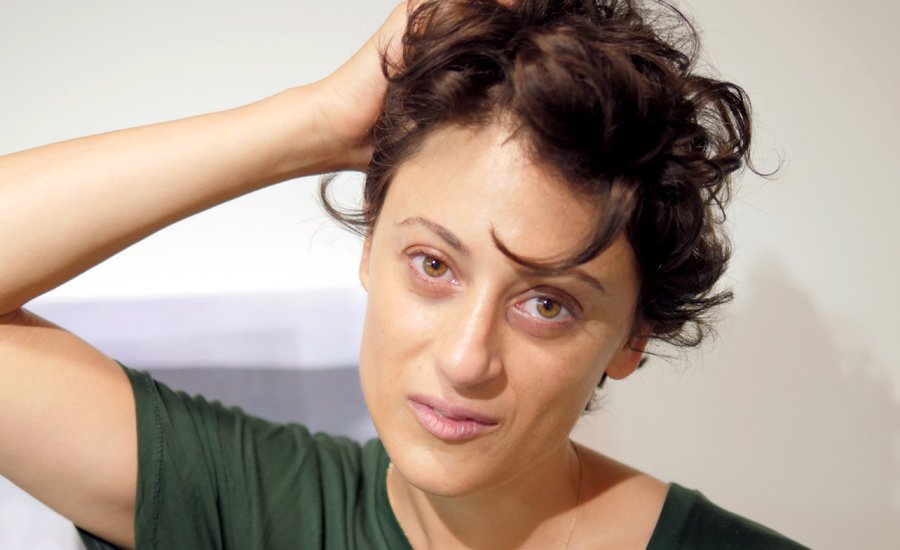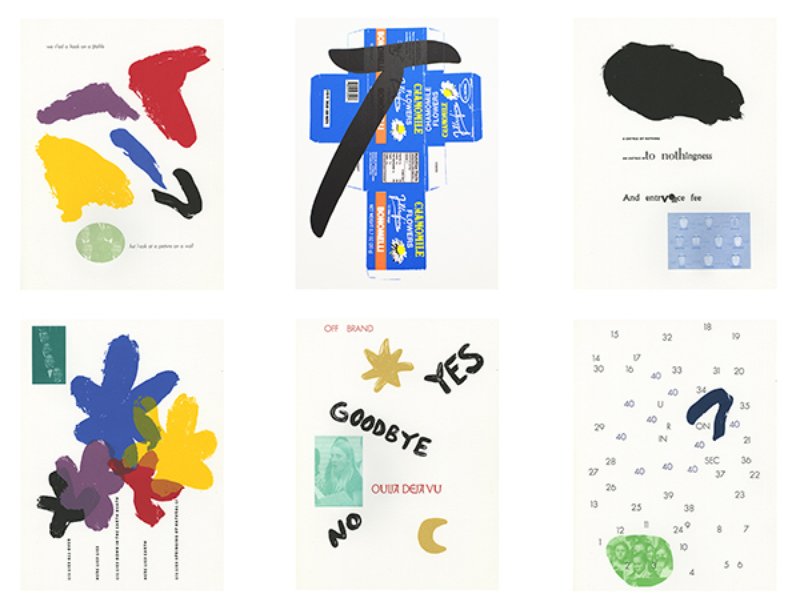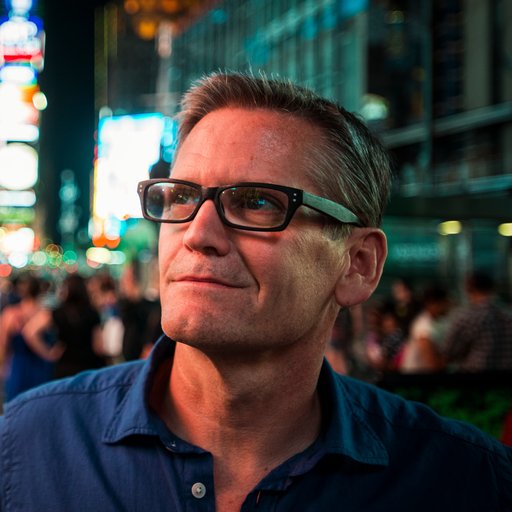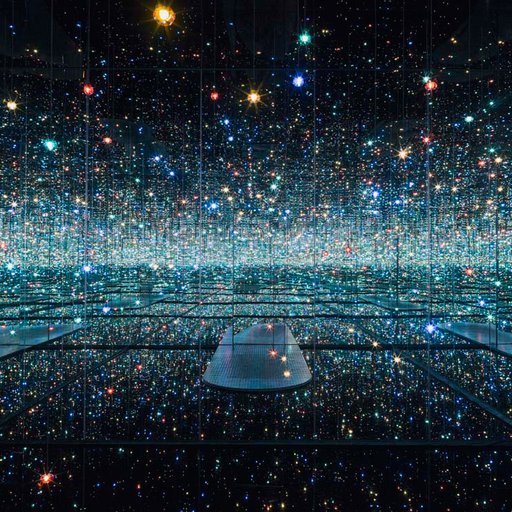Artspace is collaborating with The Creative Independent , a resource for artists with a deep archive of interviews , wisdom , and how-to guides , to bring you key learnings from visual artists about the creative process. This article was originally published on March 27, 2018.
New York-based artist Sara Magenheimer thinks a lot about text: how it looks, what it means, and the ways in which it becomes physical. Her works, which span sculpture, collage, installation, video, sound, and performance, can be read like expanded sentences—narratives that are at once funny, absurd, and poetic.
This past spring, the New Museum's street-level storefront window at their 231 Bowery building hosted a video installation of hers, in conjunction with a downloadable text called “Notes on Art and Resistance A–Z"—"Written by the artist over the course of the past year, following the 2016 US presidential election, the text comprises a sequence of personal meditations on making art in a time of profound political and social change," according to the New Musuem.
Here, in a conversation with Laurel Schwulst that was originally published on The Creative Independent , the artist talks about her reluctance to use the term "found footage," the role journaling and meditation play in her practice, and her theory about women's innate understanding of abstraction.
After reviewing your videos, my most pressing question, again and again, is: Where and how do you start? I ask because each one feels like its own completely unique world of thought.
My videos are architecture for sets of ideas. The structure of the video houses those ideas.
For my video Art and Theft , I found research saying it takes about eight minutes to rob a house, which seems impossible to verify. Whose house? What neighborhood? How many people are robbing it? There are so many questions. This absurd but supposedly true proposition structures the whole piece, with a countdown running in the corner. The video is built on a faulty foundation.
 Stills from
Art and Theft
, 2017. HD Video with Sound, 7 minutes, 22 seconds. Image courtesy of the artist.
Stills from
Art and Theft
, 2017. HD Video with Sound, 7 minutes, 22 seconds. Image courtesy of the artist.
Ten years ago I read a story in the New York Times about a deer that broke into a public school. I later understood this is a common problem. Deer overpopulate so easily and get in the way of human activity just by being alive. The result can be messy and violent. I don’t know if they’re curious or if it’s nature’s act of sabotage. For everyone involved, it’s silly, confusing, and chaotic because an animal is in the wrong place.
So, I knew this phenomenon existed, but it took a long time to grow into something useful. Meanwhile I changed, the world changed. I saw new things and made new connections. The video itself came together in about two weeks of intensive editing.
 Stills from
Art and Theft
, 2017. HD Video with Sound, 7 minutes, 22 seconds. Image courtesy of the artist.
Stills from
Art and Theft
, 2017. HD Video with Sound, 7 minutes, 22 seconds. Image courtesy of the artist.
Since each of your videos takes a long time to create, do you employ any rituals to structure the process?
Since I was really young, my main ritual has been writing every day. Recently I started meditating every morning, too.
When I write, I use a physical journal as well as the computer. I like the mechanical process of my hand on a page for its repetition and tactility.
I’ve been thinking about tactility within social media. Instagram, for example, can be an automatic act of touching. It’s so poignant: you just want to touch your friend’s face. Touch all your friends’ faces. All at once. And really fast! You just want to stroke or pet them. It’s such a gentle gesture. It’s like you’re petting a little hamster or a small animal with two fingers… but you’re stuck on the other side of glass.
What started the change from writing to meditation?
I still write every day, so it’s more of an augmentation, but I was reading about meditation for a long time before I found a way into it. A friend recommended Zen Mind, Beginner’s Mind by Shunryu Suzuki. Do you know of it?
I’ve heard of it.
The book is based on a series of lectures Suzuki, a Japanese Zen Buddhist monk, gave in America in the ’70s.
And you enjoyed it?
I love it. I’d recommend especially listening to the audiobook read by Peter Coyote, who has an amazing voice. If you’re interested in meditation, you should listen to that.
They say 21 days is how long it takes for any habit to stick. That goes for anything—even using Instagram.
What are your habits in using found footage like?
I don’t call it “found footage” because I’m not actually finding it. Actually, the footage I shoot is more “found” because it’s observational and genuinely discovered in the world. I’m walking down the street, thinking, “Oh look, I found a scene. I’ll frame and record it.” I shot the footage on Mt. Etna and the scene of the Entertainment Tonight reporter in front of Trump Tower and a lot of other moments in Art and Theft that might appear “found.” As for things from elsewhere, those I seek out—like all those deer images or the scene from the Martin Scorsese film After Hours that I use in that video.
It’s an artist’s main job to keep their eyes open all the time, observing. Meditation helps me because it’s a practice of non-judgmentally observing yourself and the world. You remain detached, which is useful in making a decision—like whether using a particular piece of footage is appropriate or not. In becoming an observer, you can be more objective about how and why you use certain things. Is it for the content? The tone? The color? The twist on the thing that came before or comes after, or is happening simultaneously?
I have a big archive. This is probably a common contemporary way of working. On my computer, I have folders of stuff I shot in my studio, folders of gathered images… I can picture one now titled “Globes,” for instance. I never know where any of my collections are going to lead. But then, 10 years later, there’s a deer in my video. So it’s important to keep it up even though it’s chaotic and confusing at the time. Categories emerge.
 Still from
Break Up Song
, 2018. HD Video Silent. Part of the New Museum installation NOON. Image courtesy of the artist.
Still from
Break Up Song
, 2018. HD Video Silent. Part of the New Museum installation NOON. Image courtesy of the artist.
Do you collect text too?
Yes, I do. I’m usually reading four or five things at once, and I take a lot of notes.
I noticed the line “You get a boat, I will learn to drive it” appears next to your name on your website.
That line is my mis-remembering of a quote from the French sci-fi film Je T’aime Je T’aime by Alain Resnais, which is ironic because the central theme of that film is film’s own participation in the mirroring back of our faulty human capacity to accurately remember reality and our need to construct narrative, however flawed. No medium is “lossless,” especially our own “unmediated” minds.
And is there any backstory to the line “Women own the void” from your video Art and Theft ?
It’s a variation on a phrase from an image circulating online by the artist Audrey Wollen. I also think the concept was being talked about in other ways by other people, and I just absorbed it. A zeitgeist? There’s friction and contradiction inherent in that statement. How do you own a void? It’s inherently nothingness. I like the hubris of claiming the most nothing!
I feel torn by a desire to make positive assertions and a need to see the same thing from many angles. This makes me good at asking questions, but bad at making bold statements because too often I see the other side, and it seems valid, too.
Women understand abstraction because we’re all dysmorphic to some degree. We watch our bodies and the bodies of our female friends go through incredible transformations. And we “get” conceptual art because we’re all already abstractions of a concept: Adam, or “Man,” the original. In Christianity, women are told that they’re the extra rib. Women must conceptualize their sense of self from the very beginning.
This could so easily lead to some essentializing about women’s bodies, and who gets to be a woman. Well, I’ll speak for myself: I grew up as a woman. That’s all I know. Our bodies are so confusing and crazy. We go through puberty, we get hips and boobs of all shapes and sizes, some of us get pregnant or see our friends getting pregnant, bellies getting enormous, and imagining this other human growing inside. There’s a period during which we’re two people! Not to mention every month, part of our body turning inside out and leaking outside of our physical boundary. It’s pretty sci-fi, messy, and quite Ab-ex. Living in a female body is like Alien meets Jackson Pollock. Women really get that on a physiological level. I trust the body’s knowledge.
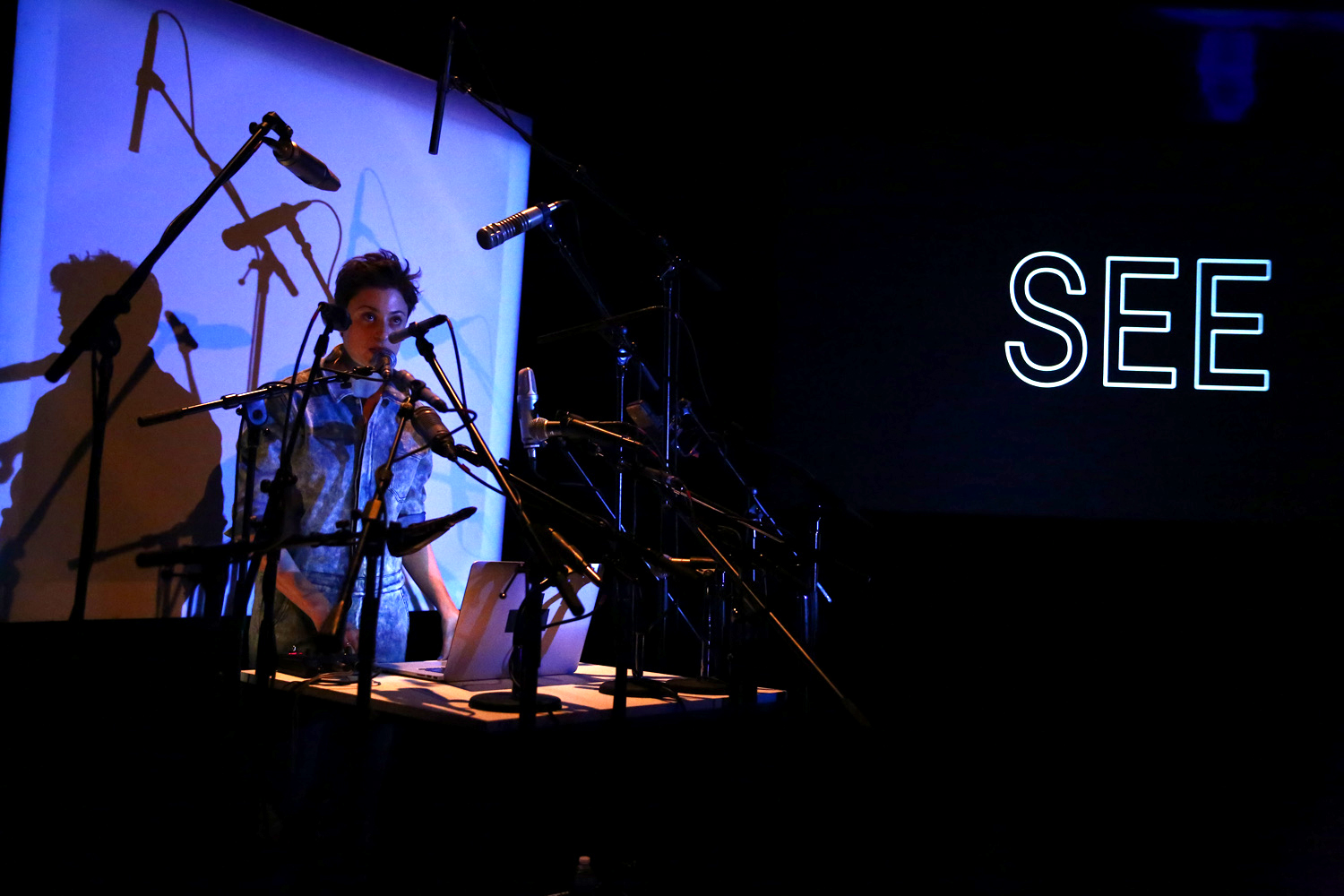 Documentation of
I Collect Neglected Venoms
, 2017 at The Kitchen, New York. Photo credit: Paula Court. Image courtesy of the artist.
Documentation of
I Collect Neglected Venoms
, 2017 at The Kitchen, New York. Photo credit: Paula Court. Image courtesy of the artist.
You have a series of manifesto-like documents called “Notes on Art and Resistance, A-Z.” On line J. you say, “Heighten contradiction and permit multiples.” While I haven’t known you that long, I’ve still seen your work evolve over time. I’ve noticed it become more layered and nuanced, perhaps because it incorporates new mediums, such as performance and installation. Is this direction intentional?
I’m just trying to keep it interesting for myself. I don’t want to get bored, and I get bored easily. I have always wanted to do what I’m worst at or the process I haven’t yet mastered. I like figuring things out. It keeps me hungry—being a beginner. There’s a freedom that comes with the role of the novice, but it does make my life more difficult and also confuses people. They generally don’t know into which category I fall.
My background is in semiotics, film, literary theory, women’s studies, language, and art. In college I started with the more cognitive processes, so I had to make a conscious effort to put my references aside when working creatively because I felt too encumbered by rational thought.
After school, I consciously didn’t participate in the “Art World,” not that I even understood what that was. I still don’t. The few galleries I’d been to just seemed really cold, like places for the rich. I come from a working-class town and had an enormous chip on my shoulder about class. I was interested in connection, emotion, music, and narrative, so I started a band and spent the next eight years putting out records and touring before I went to grad school for my MFA.
In terms of that quote you pulled about allowing contradiction—yeah, I believe the value of art and living as an artist lies in the freedoms you give yourself. The freedom to be contradictory, to have a long weird path to where you are now and to know that the ground on which you stand is itself a path to someplace else; the freedom to be two people, speak with many voices; the freedom to be both wrong and right at the same time.
Artists experience more of the human spectrum and inhabit the gray areas that are off limits to many. That’s the tragedy of… whatever you want to call it, capitalism, Western culture, tradition, gender binaries, racism, sexism, these human structures that have evolved around us—they end up cutting off our realm of possibility, the very things that make us human. Art is a record of decision-making, and in that way, it delineates a breadcrumb trail leading outside a structure.
[related-works-module]
RELATED ARTICLES:
4 Reasons to Collect Sara Magenheimer's $500 Work—Besides Her New Museum Show











